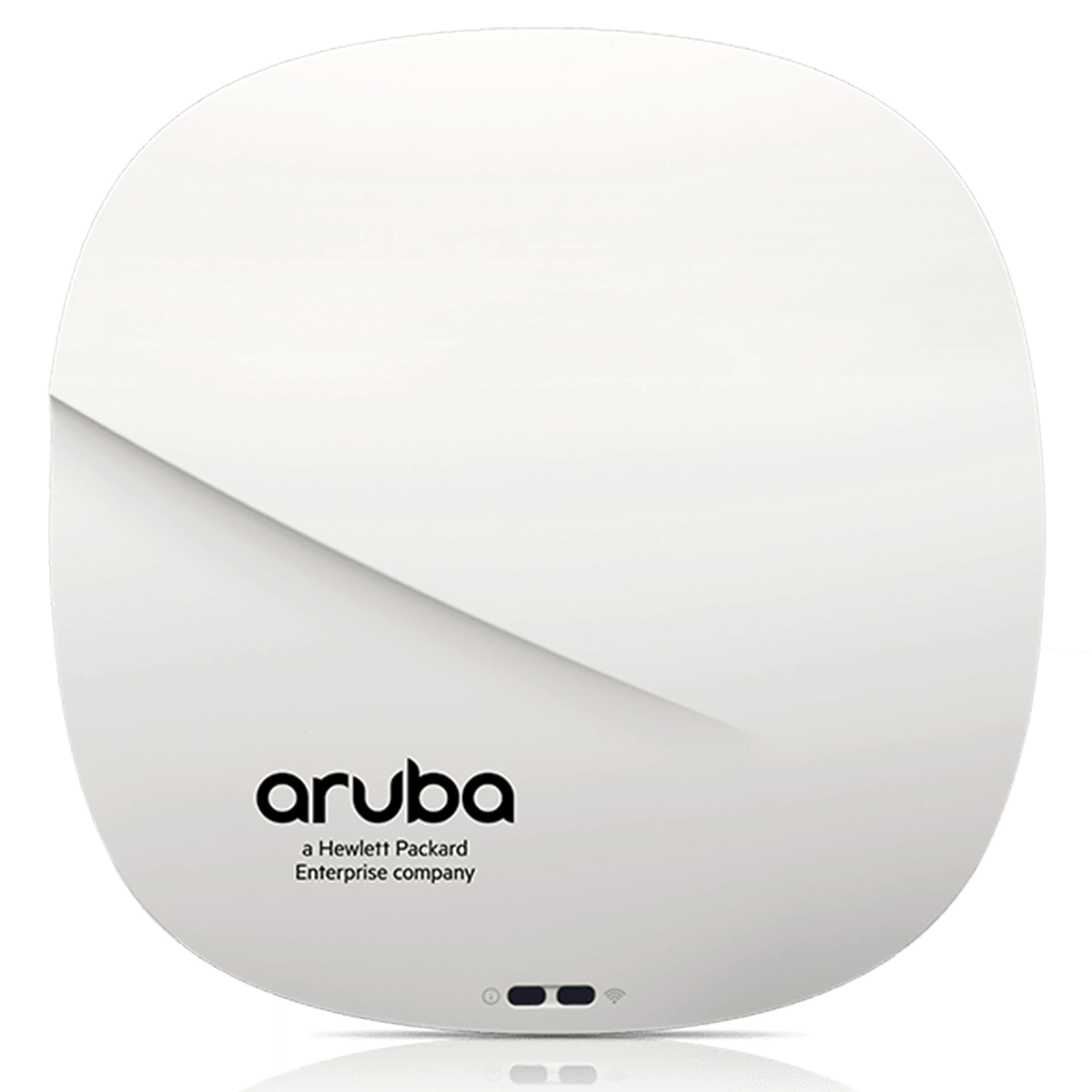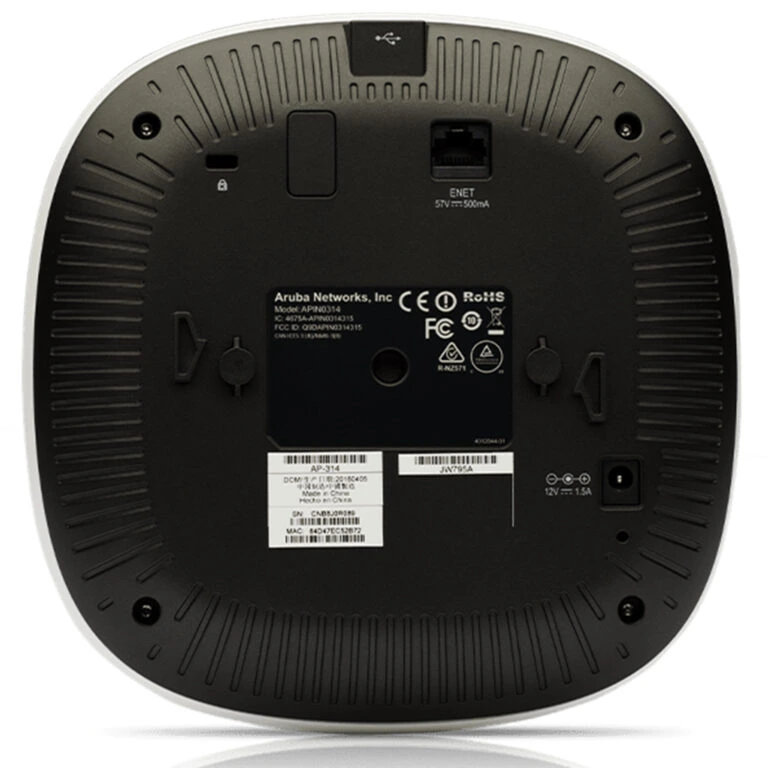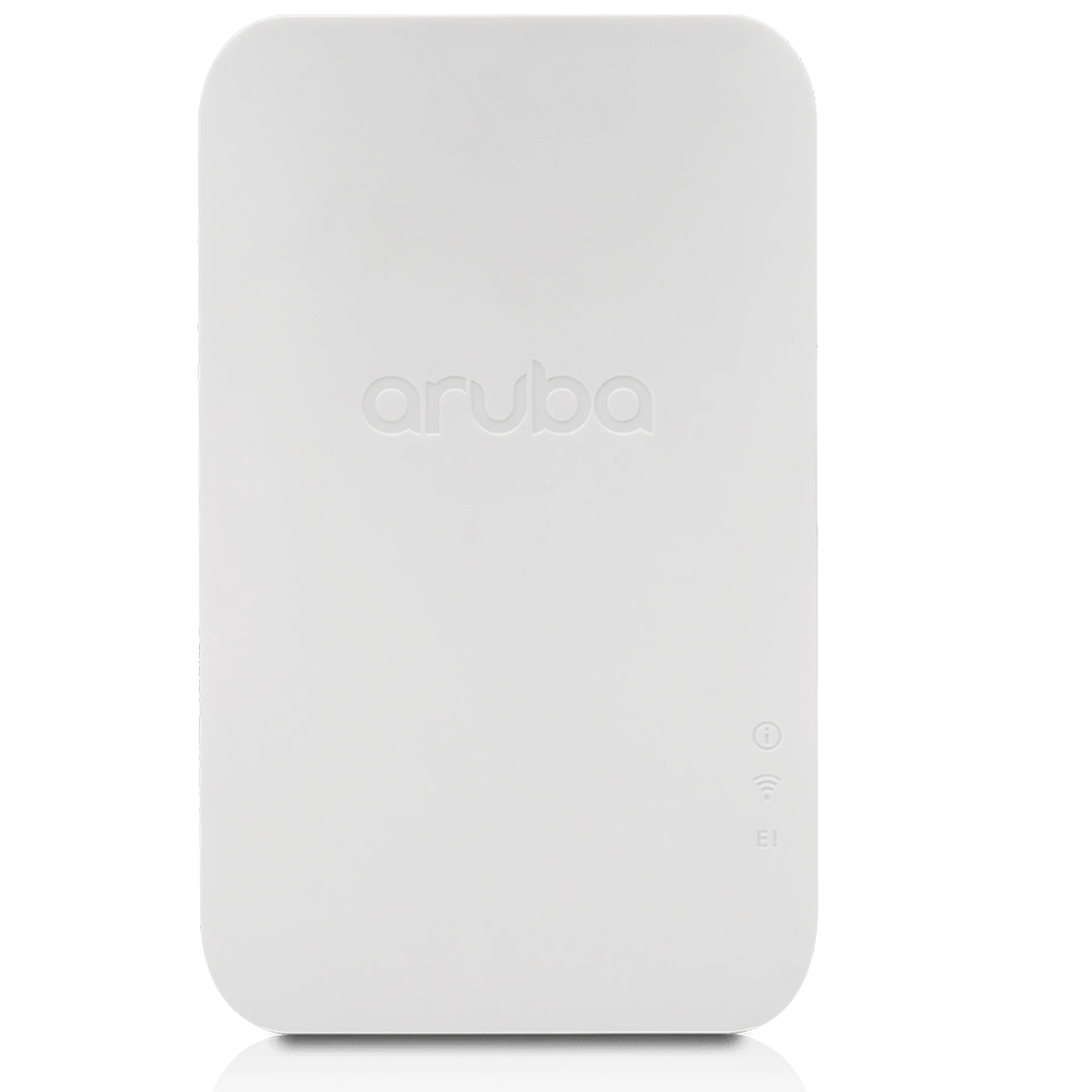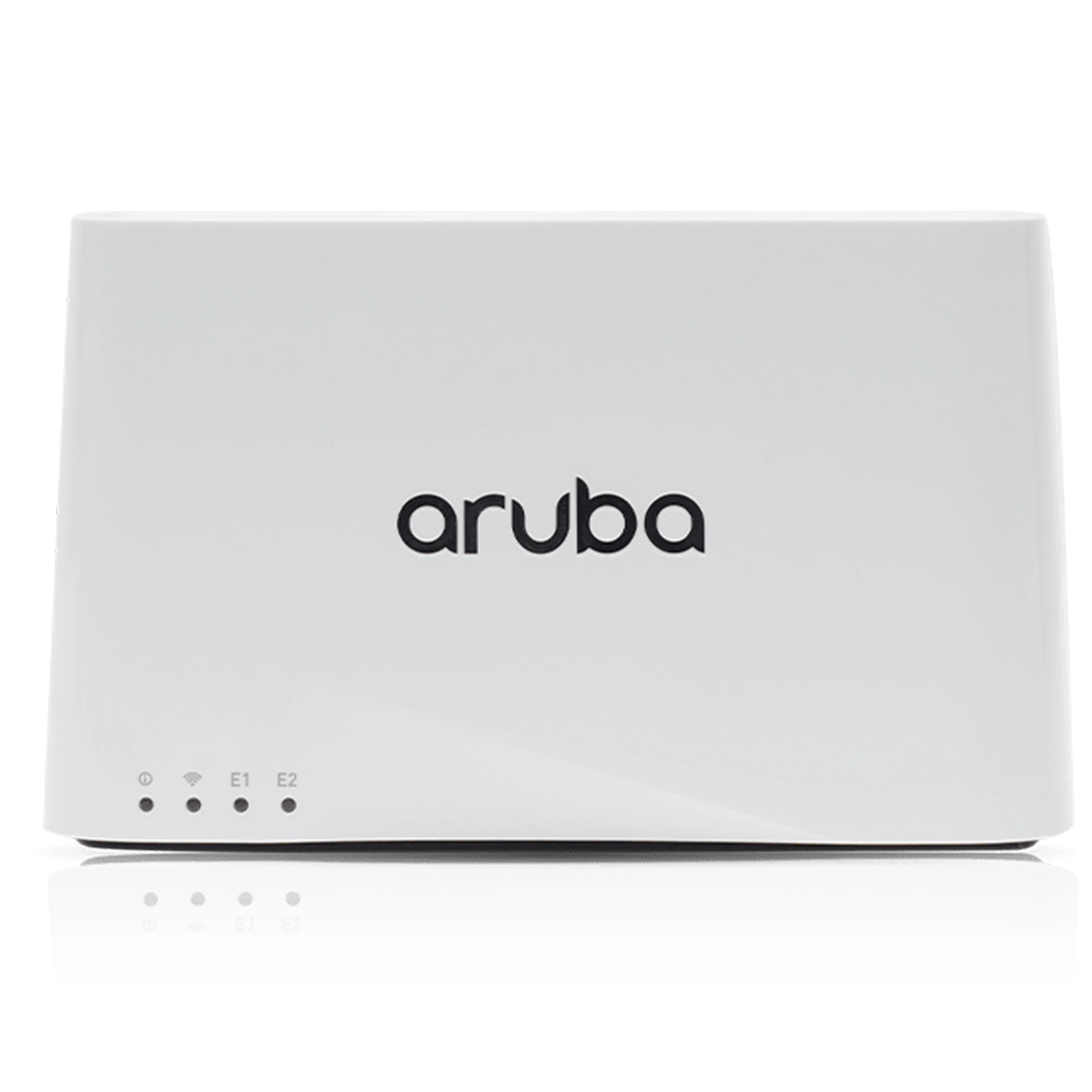- +971 433 83 178 |
- Email Us: sales@cyberlegend.ae
ARUBA 207 SERIES
Aruba 207 Series offers high throughout wireless (802.11ac) for medium business enterprises. This access point is enriched with integrated BLE and 802.3af power that enable business to improve performance and productivity. It provides integrated Bluetooth capabilities to enable IoT based location services, asset tracking, and mobile engagement services, making it ideal for schools, retail branches, warehouses, hotels and branch offices where the environment is cost sensitive.
Features
Enables Location based services
Advanced cellular coexistence (minimize interference from 3G/4G cellular networks)
Adaptive radio management technology
Unified wired and wireless policy
Intelligent App visibility and control
Enhance productivity and performance
Affordable for everyone
Description
Overview
The affordable, mid-range Aruba 207 Series access point delivers high performance 802.11ac for medium density enterprise environments, such as schools, retail branches, warehouses, hotels and enterprise offices, where the environment is cost sensitive.
The compact Aruba 207 Series AP delivers a maximum concurrent data rate of 867Mbps in the 5GHz band and 400 Mbps in the 2.4GHz band (for an aggregate peak data rate of 1.3Gbps).
With the integrated Bluetooth Aruba Beacon, the 207 Series AP provides advanced location and indoor way finding, and proximity-based push notification services while simplifying the remote management of battery-powered Aruba Beacons.
Is this the right product for your business?
UNIQUE BENEFITS
Dual Radio 802.11ac Access Point
Supports up to 867 Mbps in the 5GHz band (with 2SS/VHT80 clients) and up to 400 Mbps in the 2.4GHz band (with 2SS/VHT40 clients)
Built-in Bluetooth Low-Energy (BLE) radio
Enables location-based services with BLE-enabled mobile devices receiving signals from multiple Aruba Beacons at the same time
Enables management of a network of Aruba Beacons
Advanced Cellular Coexistence (ACC)
Minimizes interference from 3G/4G cellular networks, distributed antenna systems and commercial small cell/femtocell equipment.
Quality of service for app visibility and control
Supports priority handling and policy enforcement for unified communication apps, including Microsoft Skype for Business with encrypted videoconferencing, voice, chat and desktop sharing
RF Management
Adaptive Radio Management (ARM) technology automatically assigns channel and power settings, provides airtime fairness, and ensures that APs stay clear of all sources of RF interference to deliver reliable, high-performance WLANs
The Aruba 207 Series APs can be configured to provide part-time or dedicated air monitoring for wireless intrusion protection, VPN tunnels to extend remote locations to corporate resources, and wireless mesh connections where Ethernet drops are not available.
Intelligent app visibility and control
AppRF technology leverages deep packet inspection to classify and block, prioritize or limit bandwidth for over 2,500 enterprise apps or groups of apps
Security
Integrated wireless intrusion protection offers threat protection and mitigation, and eliminates the need for separate RF sensors and security appliances
IP reputation and security services identify, classify, and block malicious files, URLs and IPs, providing comprehensive protection against advanced online threats
Integrated Trusted Platform Module (TPM) for secure storage of credentials and keys
CHOOSE YOUR OPERATING MODE
Aruba 207 Series APs offer a choice of operating modes to meet your unique management and deployment requirements.
Controller-managed mode – When managed by Aruba Mobility Controllers, Aruba 207 Series APs offer centralized configuration, data encryption, policy enforcement and network services, as well as distributed and centralized traffic forwarding
Aruba Instant mode – In Aruba Instant mode, a single AP automatically distributes the network configuration to other Instant APs in the WLAN. Simply power-up one Instant AP, configure it over the air, and plug in the other APs – the entire process takes about five minutes. If WLAN requirements change, a built-in migration path allows 207 Series Instant APs to become part of a WLAN that is managed by a Mobility Controller.
Remote AP (RAP) for branch deployments
Air monitor (AM) for wireless IDS, rogue detection and containment
Secure enterprise mesh
For large installations across multiple sites, the Aruba Activate service significantly reduces deployment time by automating device provisioning, firmware upgrades, and inventory management. With Aruba Activate, the Instant APs are factory-shipped to any site and configure themselves when powered up.
SPECIFICATIONS
AP-207 (controller-managed) and IAP-207 (Instant):
802.11ac – 5GHz 2×2 MIMO (867 Mbps max rate) and 2.4GHz 2×2 MIMO (400 Mbps max rate) radios, with a total of two integrated omni-directional downtilt dualband antennas
WI-FI RADIO SPECIFICATIONS
AP type: Indoor, dual radio, 5GHz 802.11ac 2×2 MIMO and 2.4GHz 802.11n 2×2 MIMO
Software-configurable dual radio supports 5 GHz (Radio 0) and 2.4 GHz (Radio 1)
5GHz: Two spatial stream Single User (SU) MIMO for up to 867 Mbps wireless data rate to individual 2×2 VHT80 client devices
2.4GHz: Two spatial stream Single User (SU) MIMO for up to 400 Mbps wireless data rate to individual 2×2 VHT40 client devices (300 Mbps for HT40 802.11n client devices)
Support for up to 256 associated client devices per radio, and up to 16 BSSIDs per radio
Supported frequency bands (country-specific restrictions apply):
2.400 to 2.4835 GHz
5.150 to 5.250 GHz
5.250 to 5.350 GHz
5.470 to 5.725 GHz
5.725 to 5.850 GHz
Available channels: Dependent on configured regulatory domain
Dynamic frequency selection (DFS) optimizes the use of available RF spectrum
Supported radio technologies:
802.11b: Direct-sequence spread-spectrum (DSSS)
802.11a/g/n/ac: Orthogonal frequency-division multiplexing (OFDM)
Supported modulation types:
802.11b: BPSK, QPSK, CCK
802.11a/g/n/ac: BPSK, QPSK, 16-QAM, 64-QAM, 256-QAM
Transmit power: Configurable in increments of 0.5 dBm
Maximum (conducted) transmit power (limited by local regulatory requirements):
2.4GHz band: +18 dBm per chain, +21 dBm aggregate (2×2)
5GHz band: +18 dBm per chain, +21 dBm aggregate (2×2)
Note: conducted transmit power levels exclude antenna gain. For total (EIRP) transmit power, add antenna gain
Advanced Cellular Coexistence (ACC) minimizes interference from cellular networks
Maximum ratio combining (MRC) for improved receiver performance
Cyclic delay/shift diversity (CDD/CSD) for improved downlink RF performance
Short guard interval for 20 MHz, 40 MHz and 80 MHz channels
Space-time block coding (STBC) for increased range and improved reception
Low-density parity check (LDPC) for high-efficiency error correction and increased throughput
Transmit beam-forming (TxBF) for increased signal reliability and range
Supported data rates (Mbps):
802.11b: 1, 2, 5.5, 11
802.11a/g: 6, 9, 12, 18, 24, 36, 48, 54
802.11n: 6.5 to 300 (MCS0 to MCS15)
802.11ac: 6.5 to 867 (MCS0 to MCS9, NSS = 1 to 2 for VHT20/40/80
802.11n high-throughput (HT) support: HT 20/40
802.11ac very high throughput (VHT) support: VHT 20/40/80
802.11n/ac packet aggregation: A-MPDU, A-MSDU





